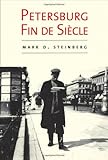Support H-Net | Buy Books Here | Help Support the NBN and NBN en Español on Patreon | Visit New Books Network en Español!
- African Studies
- African American Studies
- American Politics
- American Studies
- American South
- American West
- Asian American Studies
- Australian and New Zealand Studies
- British Studies
- Canadian Studies
- Caribbean Studies
- Central Asian Studies
- Chinese Studies
- East Asian Studies
- Eastern European Studies
- European Politics
- French Studies
- German Studies
- Iberian Studies
- India Studies
- Indian Ocean World
- Iranian Studies
- Irish Studies
- Israel Studies
- Italian Studies
- Japanese Studies
- Korean Studies
- Latino Studies
- Latin American Studies
- Mexican Studies
- Middle Eastern Studies
- Native American Studies
- Pacific Studies
- Polish Studies
- Russian and Eurasian Studies
- Southeast Asian Studies
- South Asian Studies
- Turkish Studies
- Ukrainian Studies
- Western European Studies
- World Affairs
- Animal Studies
- Anthropology
- Archaeology
- Business, Management, and Marketing
- Media
- Critical Theory
- Disability Studies
- Drugs, Addiction and Recovery
- Education
- Economics
- Finance
- Geography
- Gender Studies
- Genocide Studies
- Higher Education
- Human Rights
- Journalism
- Language
- Law
- LGBTQ+ Studies
- National Security
- Philanthropy
- Philosophy
- Policing, Incarceration, and Reform
- Political Science
- Politics & Polemics
- Public Policy
- Sex, Sexuality, and Sex Work
- Sociology
- Sound Studies
- Sports
- Urban Studies
- Big Ideas
- Celebration Studies
- Co-Authored
- Cover Story
- Historical Materialism
- History Ex Silo
- Interpretive Political and Social Science
- Invested Investor
- Landscape Architecture
- Late Antiquity
- Mormonism
- NBN Book of the Day
- NBN Seminar
- Postscript: Conversations on Politics and Political Science
- Practical History
- Preparing for Life After Grad School
- Psychology and Climate Change
- Syriac Studies
- The Chair: In The Room at the Fed
- New Books with Miranda Melcher

Jul 18, 2012
The Kirov Murder and Soviet History
Summary
On 1 December 1934, Leonid Nikolaev, a disgruntled Bolshevik Party member, shot Sergei Kirov in the back of the head as the Leningrad Party boss approached his office in Smolny. The murder sent shockwaves throughout the Soviet leadership, which with Stalin as its helmsman, used it to concoct a wider conspiracy that fingered oppositionists as the true plotters. By 1937, Stalin had used the murder to initiate full blown political terror against his former political enemies, military leaders, intellectuals, former classes, and ordinary people. When the smoke cleared in the summer of 1938, 2.5 million people had been arrested and an estimated 700,000 had been shot, including many of the purgers themselves. Kirov's murder is considered by most to be the crucial spark that ignited this conflagration of death.
But who really killed Kirov? Was Nikolaev a lone gunman? Or did Stalin orchestrate Kirov's murder to eliminate a potential rival and justify mass murder? Until recently, the "Stalin did it" theory served as the historical consensus despite skepticism from a few. No longer. In his 832 page tome The Kirov Murder and Soviet History (Yale University Press, 2010), Matthew Lenoe rakes a fine toothed comb over the available evidence about the murder to decisively settle the debate and examine its place in Stalinist and post-Stalinist Russia. Moreover, as part of Yale's Annals of Communism series, the book contains 172 translated documents, most from Soviet archives. Did Stalin plot to kill Kirov? Lenoe convincingly shows that the most plausible answer to this persistent question is no. Stalin was guilty of many, many things, and certainly used the murder to his political advantage, but Kirov's murder was the work of Nikolaev and Nikolaev alone.



































































































